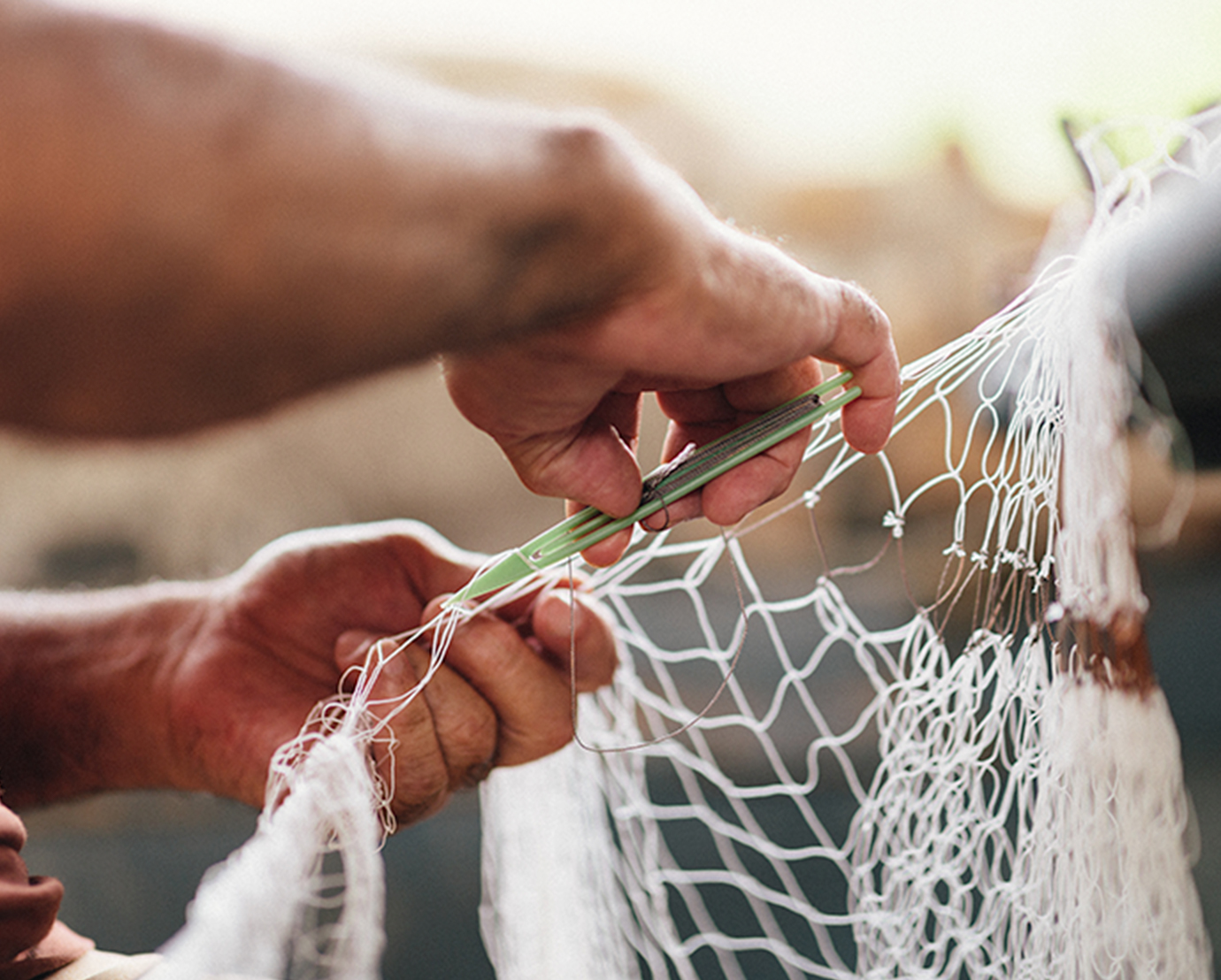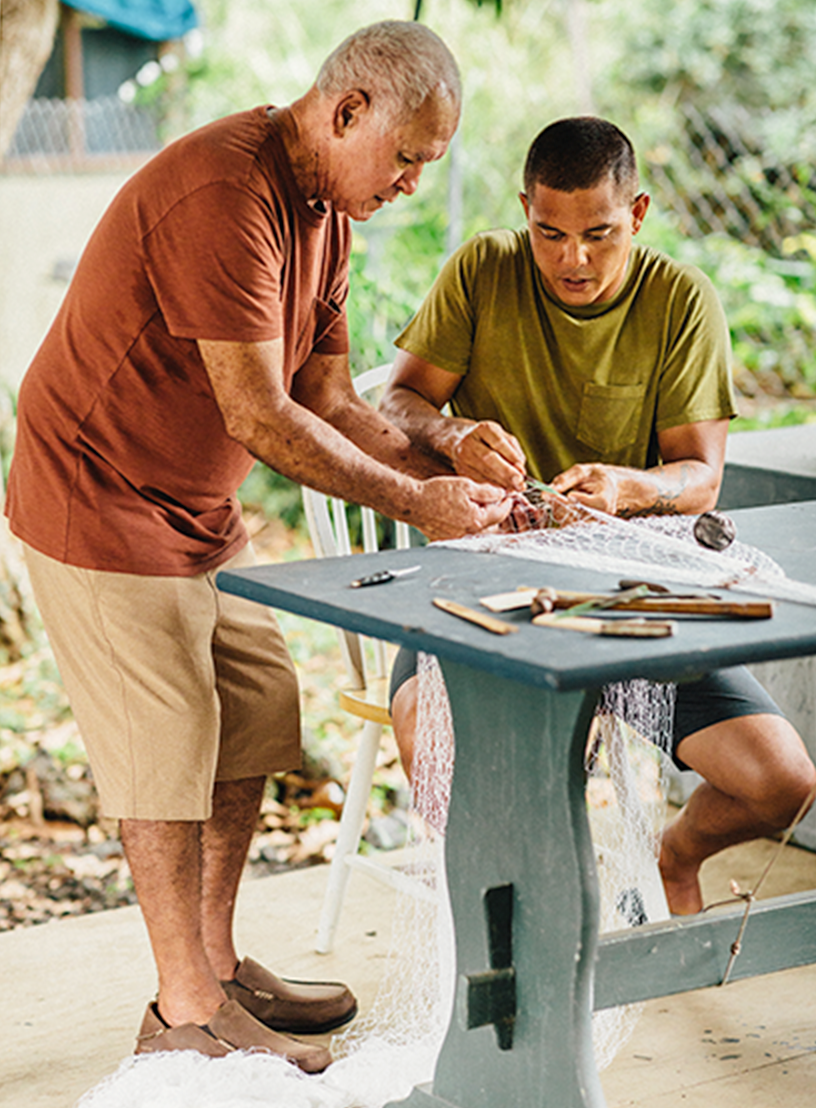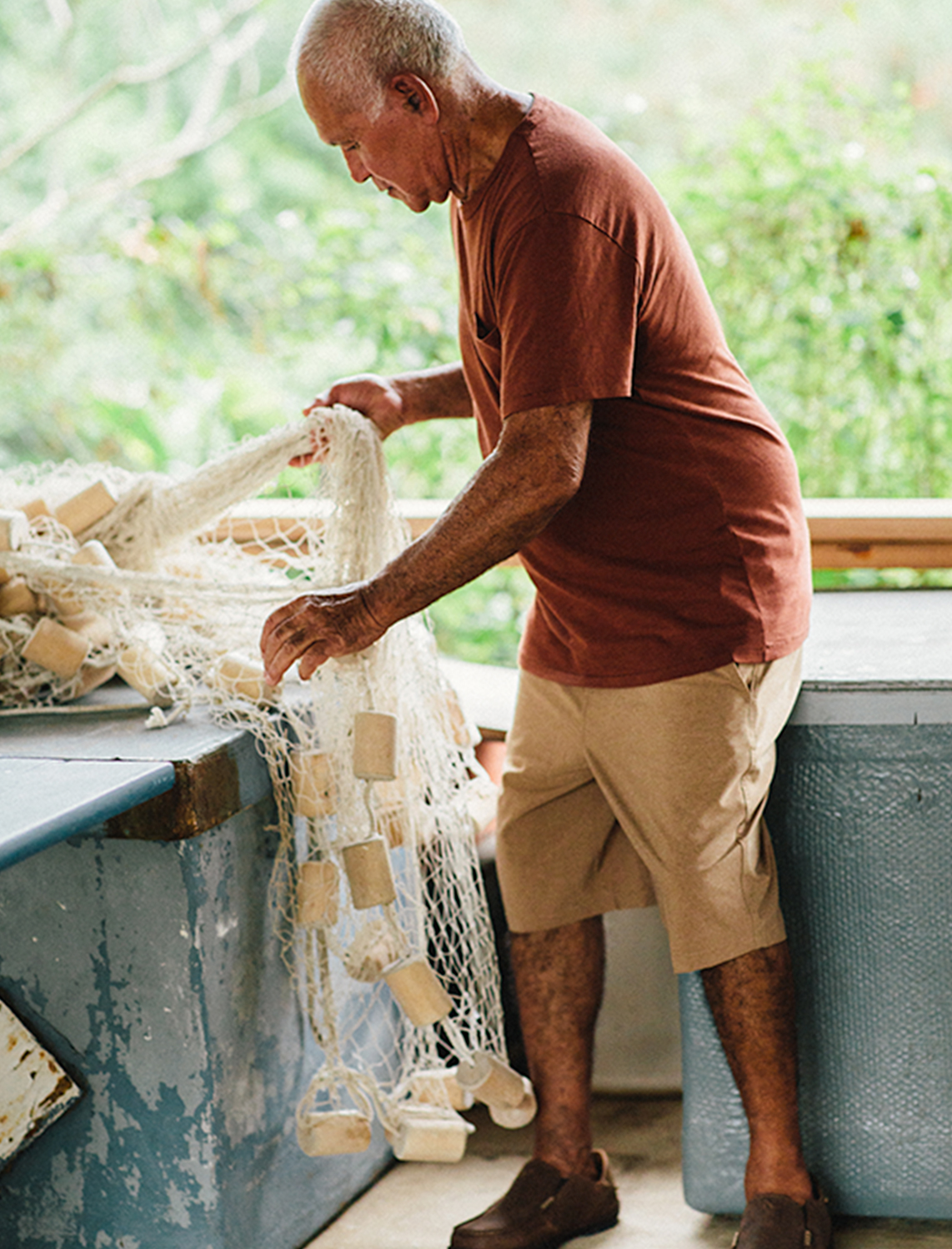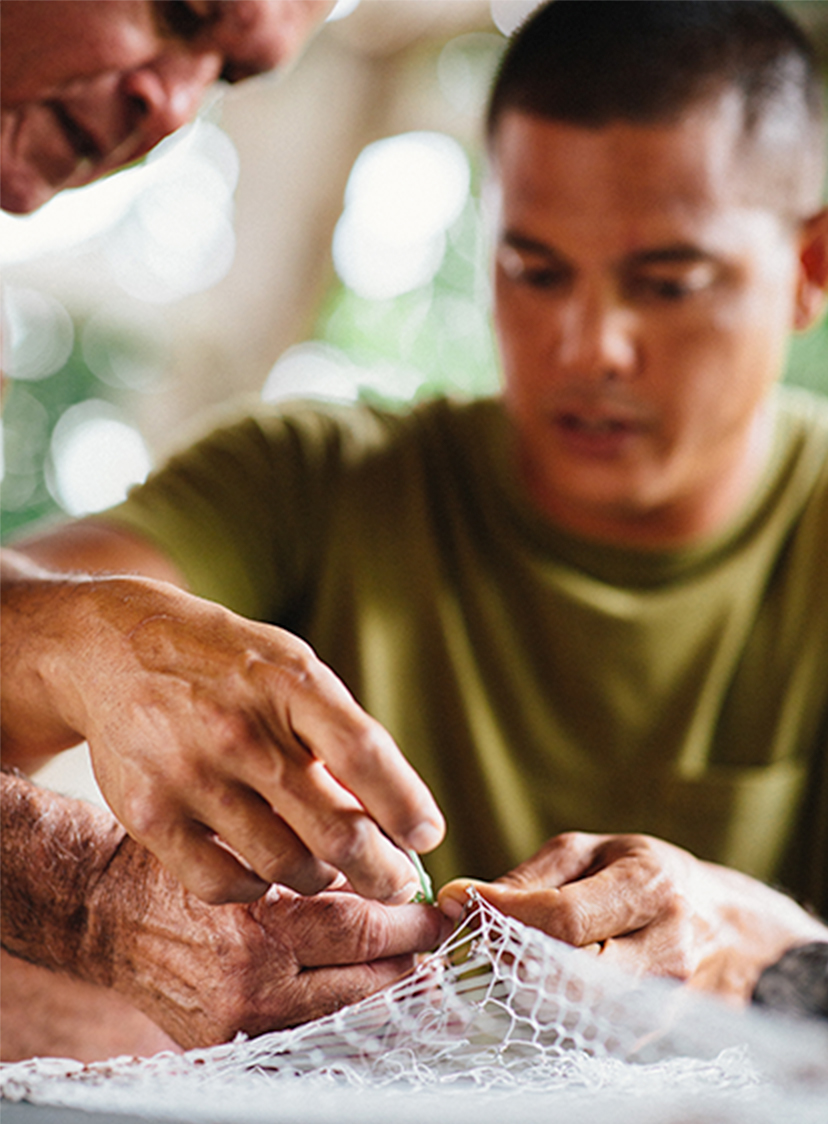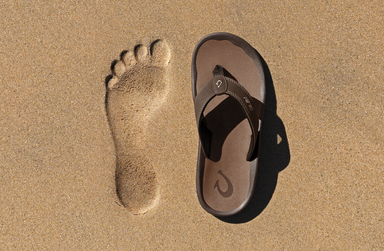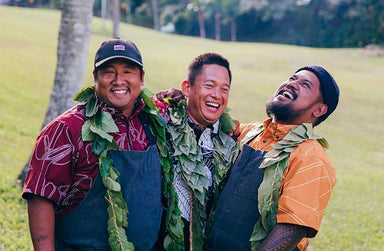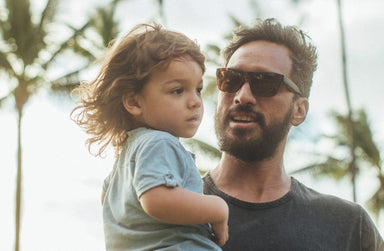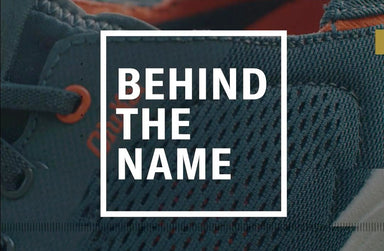Walk Stories
OluKai
Feb 21, 2020
Weaving Wisdom: Talking Story with Chuck Leslie
From August through March, third-generation Nāpō‘opo‘o fisherman Chuck Leslie can be found in his boat, Hana Like, fishing the deep waters off of south Kona. In the early morning hours, he fishes for ‘ōpelu—a type of mackerel sustainably fished by Native Hawaiians—with a handcrafted hoop net, just as his ancestors have done for centuries. Since the age of five, he has been devoted to practicing traditional Hawaiian fishing methods. Now in his late 70s, Chuck is a master at his trade and craft. He might be the last traditionally-raised fisherman in the region, but he is passing down this knowledge to the next generation, connecting the youth to their past. Fluent in nearly every fishing practice, Chuck continues to maintain his coveted ‘ōpelu nets and the important cultural fishing traditions that ensure that the ‘ōpelu population remains healthy for decades to come. We met Chuck at a Hawaiian immersion school, where he was delighted to share his infinite fishing wisdom and age-old net-weaving techniques.
How do you capture a child’s attention with net weaving?
There’s something that happens when I sit with the kids and we start making nets—they cannot let their minds drift off to different things that they want to do; their hands have to be working and their minds have to be there the whole time. With net making, everything has to be focused right there. I get a lot of enjoyment from that; seeing new kids and what they can do, and how they’re enjoying what I can give them. I also get grownups now that also come to make ‘ōpelu net. We have only three people on this island that makes this net now; once we’re all gone, there’s no net like that. You can't buy it.
Are there any kids following in your footsteps right now?
I tell these young boys that are into the type of fishing that uses this net, that this fishing is going to come to an end if nobody knows how to make this net. So now I have three boys making them, and I figure there’s some hope—and they’re doing pretty good, too. I always get a phone call at the end of the day like, “Uncle, I ran into a snag.” I see what’s the snag, if I can correct them on the phone, or I tell them to come back and I correct it for them. So it’s been a real challenge, getting this thing going.
How did you learn ‘ōpelu net making?
At five years old, I was picked to start learning how to do nets—I learned from my father. I had five brothers, but he picked me as the one to teach how to make nets, and I was very happy. When he first set me up, there was a big porch we were sitting on and there was a post in the back. He’d tie the net to the post and a table and he’d put a chair between the table and a post. He sat on one side of the table making the net. He told me to sit in the chair and hold one line from the net. To me, something looked wrong with the picture because the post was holding the net. When I asked him why I was holding one line, he said, “Well, if you're not gonna hold the net, you’re not gonna be sitting there and watching me how to make the net.” And from then on, I practiced net. I started just playing with the net, and he always said, “You’re doing good.” And from there I worked to become a master net maker.
How long does it take to make an ‘ōpelu net?
If you go by hours, maybe close to 3,000 hours to make—it’s a big net; it’ll be 24 feet in diameter and 40 feet deep. And you’re making them eye for eye; but you have the patience and you want to see that net finished, so you sit there. That’s the only way it’s gonna finish, so you stay there and keep making it.
Why is it important to pass this knowledge on to the next generation?
I find it’s easier to teach the kids rights now because that’s the way I learned. I’m trying to bring that way of learning back and it’s working with the young kids; they’re really interested.
What do you enjoy most about spending time in the ocean?
Oh, the calmness. I fish by myself, where nobody’s around. I don’t like to go to town because it’s too crowded for me. Out in the ocean, it’s so calm and so nice. When I go out, I leave home at one o’clock in the morning, and I don’t fish ’til 5:30 in the morning, but I just go out there and just drift around and, you know, lay down and fall asleep. The wind always blows out, so it carries the boat out. I just relax and don’t have to think of anything.
The traditional Hawaiian practice of net fishing remains popular to this day across the state. Why do you think that is?
I think mostly because it’s how they were catching the fish way back, so I think that tradition just carried on
—that’s why I throw nets. For us, it’s just another easy way to catch the fish; so instead of catching them one by one, with a net you catch more at one time.

